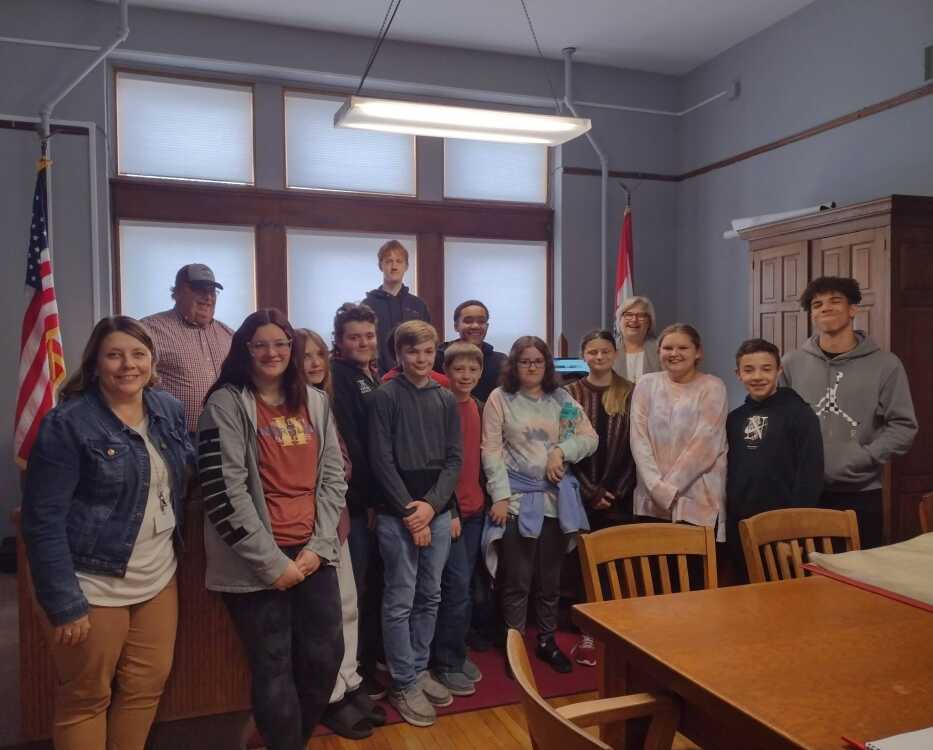Nevada Middle School club tours Vernon County Courthouse, learns local history

Nevada Middle School Social Studies teacher Kim Greer has recently formed a new History Club for students who are interested in furthering their history education. They took their first field trip Wednesday afternoon. The first place they went and toured was the Vernon County Courthouse.
County Commissioner Cindy Thompson conducted the tour and took the group to each office. Each elected official explained what their office is for and what they do in the positions that they hold. Thompson started by giving the history of the courthouse. She noted that the county has had three different courthouses throughout the years. The first one was built in 1857, however, it burnt to the ground six years later. The second one was built in 1868 for an estimated $25,000 and lasted for only 60 years, and began deteriorating. It was demolished and the current courthouse was built with an estimated cost of $75,000 but actually cost $80,000.
Another interesting piece of information that Thompson provided the group is that the city’s name has been changed three times before finally being named “Nevada."
After the group completed the tour inside, Thompson took the group outside and informed the students that at the very top of the courthouse is the bell tower and clock. This was put in the courthouse in 1907, and the bell weighs 800 pounds. To finish up the tour, she told the students about William Stone’s statue that is on the courthouse lawn.
Next, the History Club visited W.F. Norman Sheet Metal Building. Owner Mark Quitno started off by advising the group that W.F. Norman founded the business in 1898, almost 125 years ago. He explained how the business just started off by stamping/molding sheet metal (tin), which is what has been used in so many of the old businesses/theater houses and victorian homes that were built in that era. Quitno said that the metal would be put up on the ceilings and outside of buildings as décor. He said as time has evolved, they even stamp/mold galvanized steel, along with copper and brass.
Greer and the History Club really enjoyed the tours, and certainly happy with the history that we learned today, and appreciated the time that the elected officials and Quitno took to explain things to them in detail.
